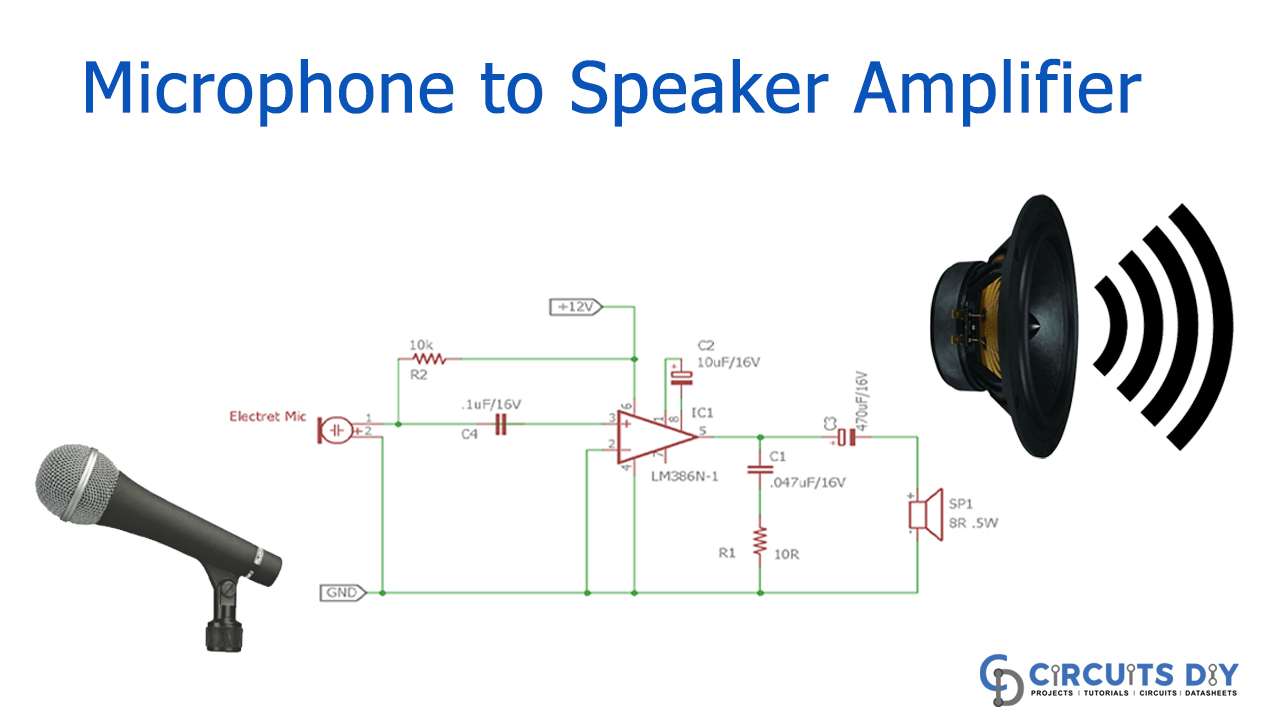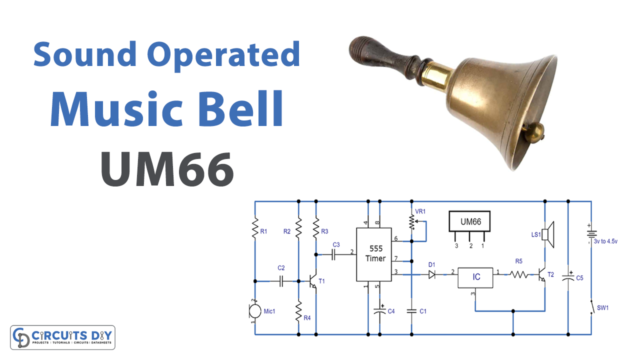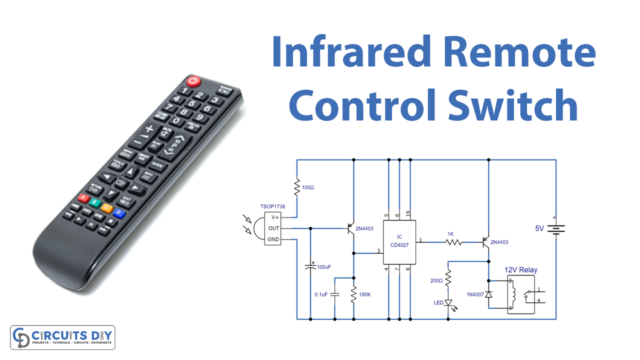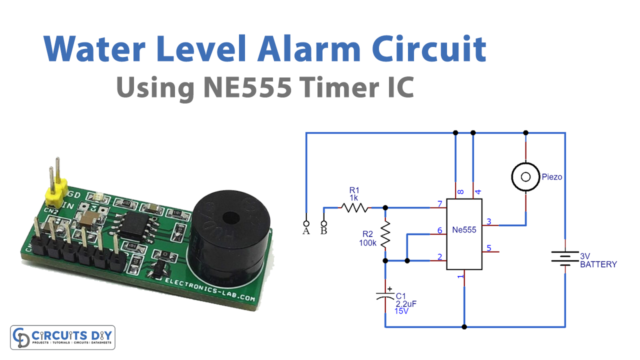How is it realistic for you to see someone talking at the MIC and the amplified sound emanating from the speaker? sIs it possible to attach a microphone with a speaker directly from MIC to a speaker, to work it off? Is it not amazing for you to build such types of circuits at home? Obviously, YES!
Here in this DIY circuit tutorial, you will learn how to create a basic Microphone Speaker amplifier circuit. In this circuit, each MIC gets the input sound, and the amplified output is emitted from the speaker.
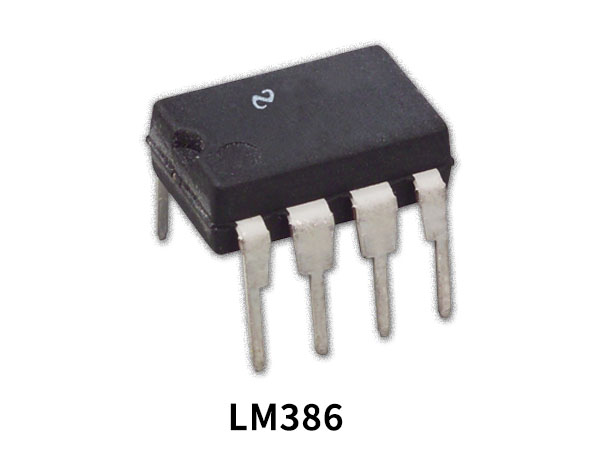
Hardware Component
The following components are required to make a Microphone to speaker amplifier Circuit
| S.no | Component | Value | Qty |
|---|---|---|---|
| 1. | IC | LM386 | 1 |
| 2. | Capacitor | 0.1uF, 10uF/16V, 470uF/16V, 0.047uF/16V | 1, 1, 1, 1 |
| 3. | Resistor | 10R ¼ Watt, 10k 1/4th Watt | 1, 1 |
| 4. | Power Supply | 12V | 1 |
| 5. | Speaker | 8 Ohms / 5 Watt | 1 |
| 6. | Electret Microphone | – | 1 |
| 7. | Bread Board | – | 1 |
| 8. | Hook up wires | – | 1 |
LM386 Pinout
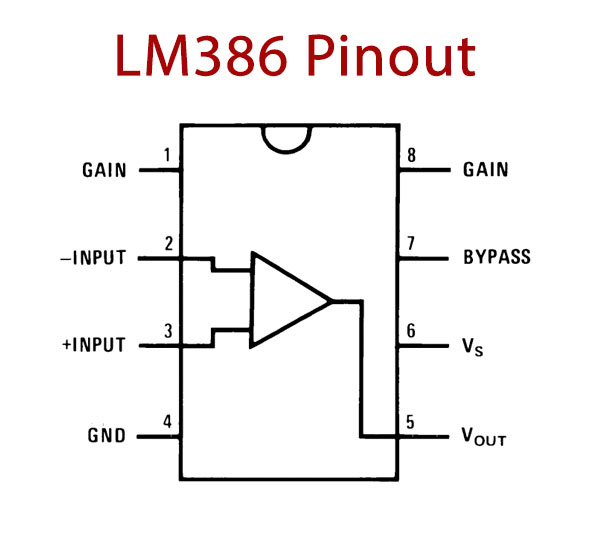
For a detailed description of pinout, dimension features, and specifications download the datasheet of LM386
Microphone to Speaker Amplifier Circuit
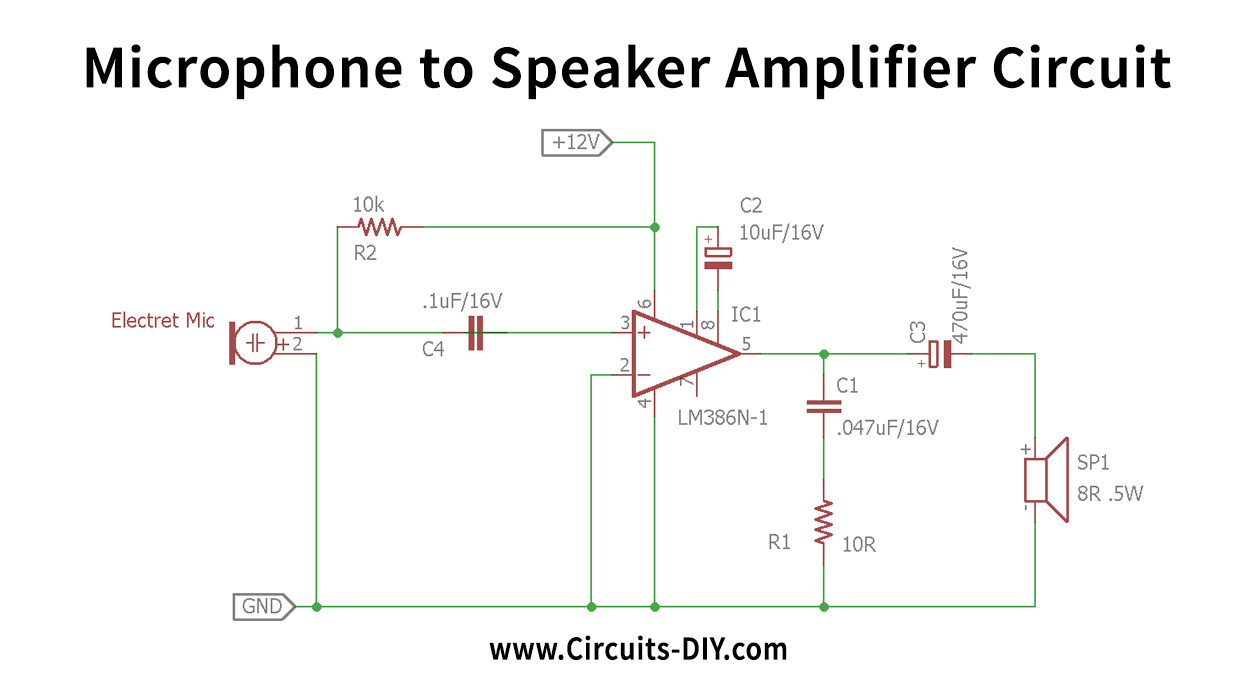
Circuit Operation
It is the same circuit as seen in the LM386 datasheet. The 10k-pot segment has been excluded, and the Microphone amplifier has been additionally biassed.
The amplifier with the corresponding pin diagrams can be seen in the circuit diagram. Depending on the signal, the amplifier provides a 200x output gain. The 10uF capacitor on pin 1 and pin 8 produces the amplifier’s 200x rise. In our circuit design, we did not adjust the amplifier gain. The 250uF capacitor is also attached to the speaker. Instead of the 250uF capacitor, we changed the values and used 470uF. A capacitor of 0.05uF and a 10R resistor are given. This RC is called a clamping circuit that protects the amplifier against the EMF emitted from the speaker. Instead of 0.05uF, we used a common but similar value of 0.047uF. In our construction, other circuits and connections stay the same.
The power amplifier can also drive the width of the load from four Ohm to 32 Ohm. Otherwise, the power amplifier or the output speaker will suffer the circuit operation.
Applications and Uses
The purpose of an amplifier is to produce an output signal larger than that of the input signal. In a similar fashion, the microphone to speaker amplifier circuits is used to amplify the input sound.

